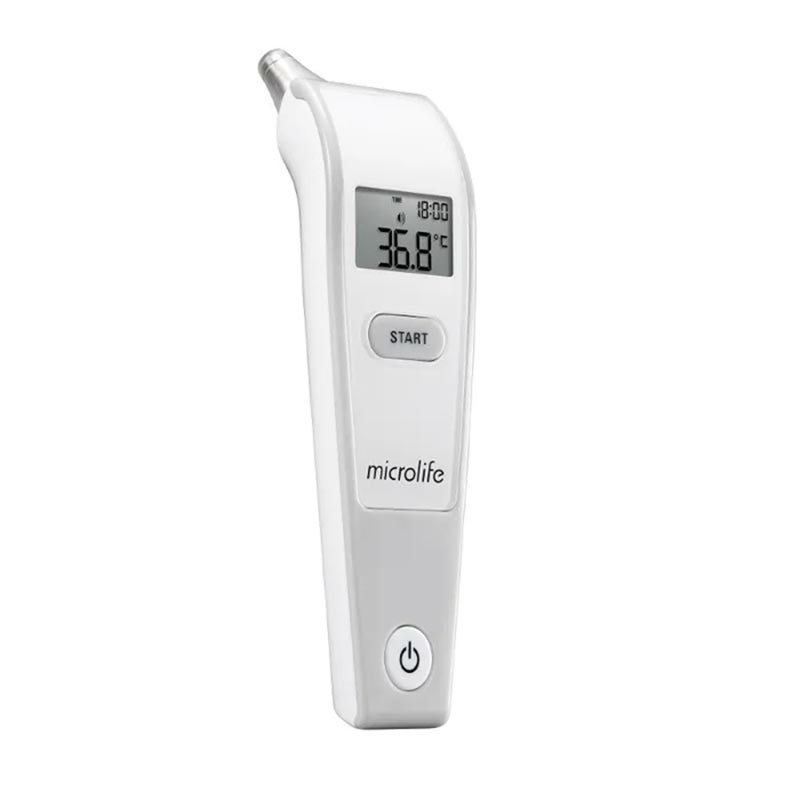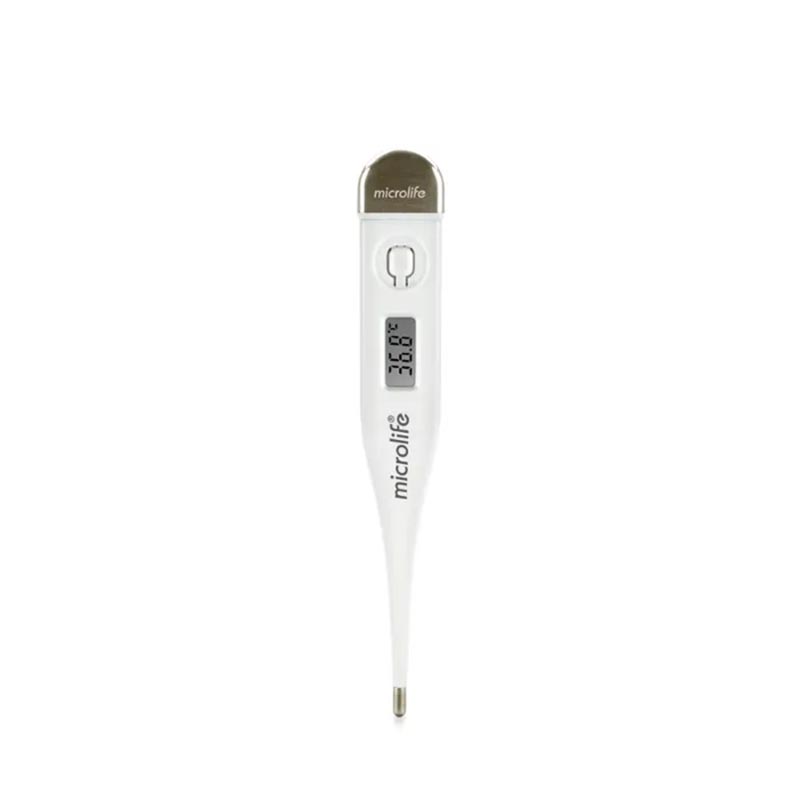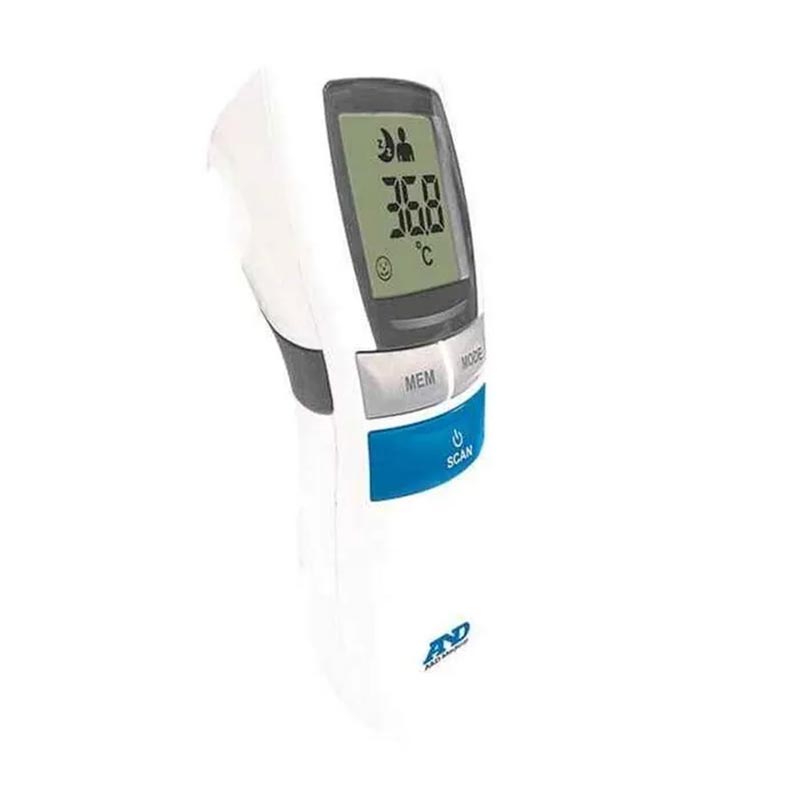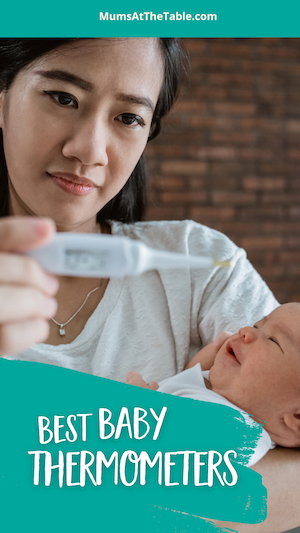Which is the best baby thermometer to use? We take a look at the pros and cons of the different types: ear, forehead, digital and more.
Fevers are a fairly common occurrence in babies and children, and there are many reasons why your little one might develop a fever. If your baby is looking flushed, crying or having trouble sleeping, it could be due to a fever.
It’s always a good idea to have a thermometer in your family first-aid kit. This way, you can accurately monitor your child’s body temperature and decide if further medical attention is required.
With so many different types of baby thermometers around, which should you have at home? Read on as we run through the different types of thermometers and how to use them, to help you decide on the best one for your family.
When is a fever too high for a child?
Fevers are defined by the temperature and age of your child and can sometimes be a serious problem requiring immediate medical attention.
- Baby aged 0–3 months: 37.2°C or above is considered a fever and you will need to seek immediate medical attention.
- Baby aged 3–6 months: 38.9°C or above requires immediate medical attention.
- Baby aged 6–12 months: 38.9°C or above with no other symptoms and lasting longer than one day requires immediate medical attention.
Fevers can seem scary, but it is the body’s natural response to infections. Often, a fever can be managed at home and we will show you how later in this article.
However, fevers that are extremely high or long-lasting are medical emergencies and you should seek immediate medical attention.
Types of baby thermometers
Every parent’s medicine cabinet needs to have an accurate thermometer with batteries in excellent working order. To ensure an accurate temperature reading, you will need to know about the disadvantages that some thermometers pose.
Ear thermometers

Digital ear thermometers are highly dependent on the child’s age, ear size and amount of existing ear wax. As such, they are not recommended for babies under six months old. A baby’s ear canal is very small and readings can be as inaccurate as 2°C, posing risks of false-negative fever diagnoses.
Forehead thermometer

A forehead thermometer, also known as a temporal artery thermometer, is a digital thermometer that is used in the middle of the forehead to test the temperature. It is regarded as an accurate thermometer for babies aged three months or older. You simply place the thermometer sensor in the middle of your baby’s forehead and scan. These thermometers are fast, showing the results on the digital display in 1–2 seconds.
Mercury thermometers

This type of thermometer is a thing of the past and should never be used for babies or young children. Mercury is a highly toxic substance for humans and the environment. They can also break, and the mercury is poisonous if swallowed or absorbed into the skin. Never use these orally or rectally for your child.
Pacifier thermometers

A pacifier or dummy thermometer is used by your baby sucking on the dummy. The pacifier shows a temperature reading on the digital display or changes colour for a fever alert. While this may seem like an ingenious invention, the temperature readings are often inaccurate and therefore not recommended.
Digital thermometers

There are various options for digital thermometers including oral, rectal and under the arm.
- Oral digital thermometers are used by placing the thermometer under the tongue and holding it there for 10 seconds, with the result appearing on the LCD display. These are not recommended for babies or young children as the readings can be lower than the actual temperature, posing risks of mistreatment. It can also be difficult to get a baby or child to sit still long enough to take the test.
- A rectal reading is taken by placing a digital rectal thermometer just inside your baby’s rectum. This is considered to be accurate, however, is not recommended for babies or children. They are uncomfortable for your child. There is also a risk that the tip of the thermometer could damage the lining of your child’s rectum.
- To test for a temperature under the arm using a digital thermometer, the thermometer is placed in the armpit area, with the arm and body firmly pressed against the thermometer. This test is another highly inaccurate one, with many factors affecting the reading. It is not recommended for babies or young children.
Infrared thermometers

Infrared thermometers have become very popular and are an excellent choice for babies. They are simple, convenient and fast. They do not need to touch your baby, which is especially helpful if your baby won’t keep still long enough or is asleep. You simply need to point the thermometer 1–5 cm away from the middle of the child’s forehead or behind the ear, and pull the trigger. The reading will be displayed on the unit in 1–2 seconds.
Choosing the right baby thermometer
The best baby thermometers on the market for accuracy and functionality are the infrared thermometer or forehead thermometer. The infrared thermometer is safe for humans of all ages including newborns. Due to it being touchless, it helps to stop the spread of germs, reduces waste from disposable plastic coverings and can be used while your baby is sleeping. These have a higher price point, ranging from $30–$150, but are worth the price due to their versatile functions and accurate readings.
The forehead thermometer also provides accurate readings for babies aged three months upwards and is fast and easy to use. Their price point is fairly similar to infrared thermometers and is a good investment for parents with young children.
Taking your baby’s temperature is an important key feature in ensuring the health of your child. The last thing you want is to have a bad thermometer that doesn’t give you an accurate reading of your child’s temperature. You will need to take into account the different advantages and disadvantages that various thermometers have. This will help you buy a product that will last a long time and be convenient and safe for your family.
Keep in mind that all thermometers listed are not suitable for testing the temperature of food or water, including bathwater. To keep your children safe in the bathroom, you need to specifically shop for a bath thermometer.
How to reduce a fever
If your child has been seen by a doctor and has been sent home for monitoring there are many things you can do to help decrease their fever. Overdressing infants can interfere with their body’s natural thermostat, so a good first option would be to take off any clothing that could be too hot or restrictive. You can use a lightweight sheet or thin cotton clothing instead or synthetic or woollen clothing.
Read: Medications you should never give your children
While undressing your baby can be helpful to cool them down, your child should not be cold or in a drafty place as this can worsen their symptoms. You can also run a lukewarm bath to help stabilise your little one’s body temperature and help soothe and relax them.
You should also ensure that the room temperature is not too hot, adjusting the house heating as needed. Keeping your baby hydrated is very important during a fever, so keep their fluid intake up.
If your doctor has prescribed medicine, never mix it with milk or juice.
Safety first
Your child’s safety is what matters most and a good baby thermometer helps to warn you of possible risks to your child’s health. Consider an accurate thermometer as a worthwhile family investment to help keep you and your loved ones healthy.
Recurring colds or infections are problematic and should be treated wholistically, taking into account nutrition and environment. Check out our simple health tips that could make a positive difference to your child’s immune system.
Any advice given is general in nature and is not intended as a substitute for medical advice and must not be relied upon as such. For any healthcare advice, always consult a healthcare practitioner.
This post includes affiliates and/or paid inclusions.

How helpful was this article?
Click on a star to rate it!
0 / 5. 0
Be the first to rate this post!
Adriana Wales
Related posts
Subscribe
Receive personalised articles from experts and wellness inspiration weekly!


